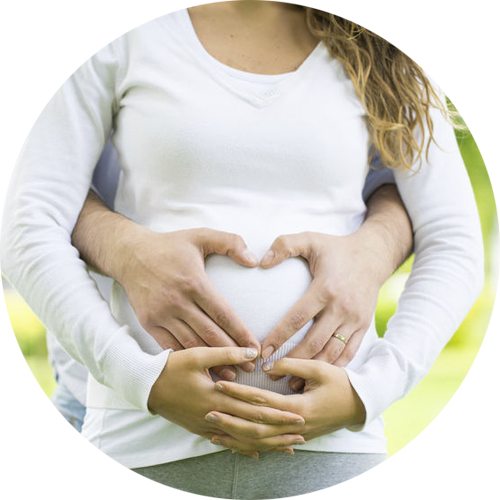
Gynaecological surgery
As a highly qualified gynaecological surgeon, Phill McChesney is a Member of Endometriosis NZ Special Interest Group, with a special interest in endometriosis and is available to perform minimally invasive laparoscopic hysterectomy procedures in Auckland.
Please click to read more about how Phill can help treat endometriosis and advise on your hysterectomy options, or to read about the gynaecological surgery services, use these jump links:
Ovarian cysts | Fibroids | Prolapse | Bleeding & Pain | Adhesions | Tubal Ligation
Abnormal vaginal bleeding & heavy periods
Abnormal bleeding may represent heavy bleeding (menorrhagia), bleeding between periods (intermenstrual bleeding), bleeding after sex (post coital bleeding), irregular bleeding or bleeding after menopause (post-menopausal bleeding).
Heavy bleeding is not only inconvenient and expensive to manage, but can be accompanied by pain and discomfort. Irregular or heavy bleeding can also indicate underlying issues and should be investigated by an expert gynaecologist.
The initial investigation usually involves an ultrasound of the pelvis and a clinical examination by the gynaecologist. Hormone blood tests may be recommended.Sometimes hysteroscopy (a very small telescope being inserted vaginally) is required to diagnose and treat the conditions causing the abnormal bleeding. In a minority of cases, laparoscopy may also be required to ensure that the causes of the heavy bleeding are fully investigated.

Uterine fibroids
Fibroids are benign growths of the muscle layer of the uterus. They occur in 40% of women and can have no symptoms, however they can cause pain and discomfort.
Uterine fibroid symptoms:
- Pelvic pain
- Pain with intercourse
- Pelvic pressure symptoms
- Heavy periods
- Interference with normal bladder and bowel function
- Abdominal distension
- Infertility
- Recurrent miscarriage
Treatment
Fibroids are normally diagnosed by ultrasound, which also provides information on which method of treatment is required, or whether no treatment is needed.
Treatment of fibroids may be by hysteroscopic, laparoscopic or open surgery depending on size, number and location. A myomectomy means removal of the fibroids by surgery – another option sometimes recommended is a hysterectomy. Occasionally non-surgical treatments are an option.
Tubal Ligation
Known as ‘tying your tubes’, tubal ligation provides sterilisation by sealing a woman’s fallopian tubes so that eggs cannot reach the uterus. Laparoscopic tubal ligations are the least invasive surgical method and allow for quick recovery times.
Laparoscopic tubal ligation is a minimally invasive surgical technique, under general anaesthetic, that involves inserting a laparoscope (camera) usually through a small incision through the umbilicus (belly button) to view the abdomen and pelvis. Usually only 1 further small incision just above the pubic hair line is required to insert an instrument to place clips on the tubes.
Surgery takes 30 – 45 minutes, followed by a recovery time in the hospital of around 4 hours. Patients are normally able to go home the same day.

Ovarian cysts
Ovarian cysts are often physiological, which means they naturally occur and often resolve themselves, however sometimes cysts require surgical removal, either because of pain or other symptoms, or to eliminate the risk of further complications or malignancy.Ovarian cysts symptoms:
- Pelvic pain
- Irregular bleeding
- Pressure symptoms
- Abdominal swelling or bloating
- Pain with intercourse
- Urinary frequency or discomfort
- Changes in bowel function
Treatment
Diagnosis of cysts involves a combination of discussion, a physical exam, ultrasound and sometimes a blood test. Once Phill has the results of the investigation, he will discuss your options with you.
Depending on the type of ovarian cyst diagnosed, treatment may range from a check up 6-8 weeks later to see if the cysts have resolved, to laparoscopic surgery to remove the cysts. Normally the ovary is not removed unless the cysts are cancerous (malignant).
Laparoscopic surgery for the removal of cysts is a minimally invasive surgical technique, performed under general anaesthetic. The surgery involves inserting a laparoscope (camera) usually through a small incision through the umbilicus (belly button) to view the abdomen and pelvis. 2-3 further incisions are required in the lower abdomen to insert instruments in order to treat the cyst, which is then usually deflated and removed through the umbilicus.. This procedure takes 1-1.5 hours, followed by a hospital stay of one night and ideally 7-10 days’ rest.
Adhesions
Adhesions are areas of scar tissue that form between organs, often sticking organs together. They are usually the result of infection, inflammation (sometimes caused by endometriosis) or previous surgery.Adhesion symptoms:
- Pain
- Infertility
Treatment
Laparoscopic surgery is a favoured treatment for diagnosis and division of adhesions due to being least invasion and offering swift recovery times. This is a minimally invasive surgical technique, under general anaesthetic, that involves inserting a laparoscope (camera) usually through a small incision through the umbilicus (belly button) to view the abdomen and pelvis. 2-3 further incisions are usually required in the lower abdomen to insert instruments in order to divide or excise the scar tissue so there is no longer adhsion between the surfaces. Laparoscopic surgery for the diagnosis and treatment of adhesions takes 1-2 hours, usually followed by a hospital stay of one night and ideally 7-10 days’ rest.
Prolapse
Fibroids are benign growths of the muscle layer of the uterus. They occur in 40% of women and can have no symptoms, however they can cause pain and discomfort.Prolapse symptoms:
- Awareness of a lump protruding from the vagina• A downward dragging sensation• Back aches
- Bladder symptoms (incontinence, difficulty passing urine, incomplete emptying, urgency)
- Bowel symptoms (constipation, incomplete emptying)
- Difficulty keeping a tampon in place
- Problems with intercourse
TREATMENT
Not all prolapse requires treatment, and if prolapse treatment is recommended, surgery is not always necessary. Physiotherapy is always important and non-surgical options such as vaginal pessaries are sometimes an option. If prolapse surgery is required, this is performed vaginally. Repairs to the pelvic floor may be made during a hysterectomy which is being performed for other reasons. Some prolapse surgery patients can develop recurrent prolapse – this affects up to 25% of women.
As with all gynaecological conditions, discussing your options thoroughly with a knowledgeable gynaecologist is essential.











